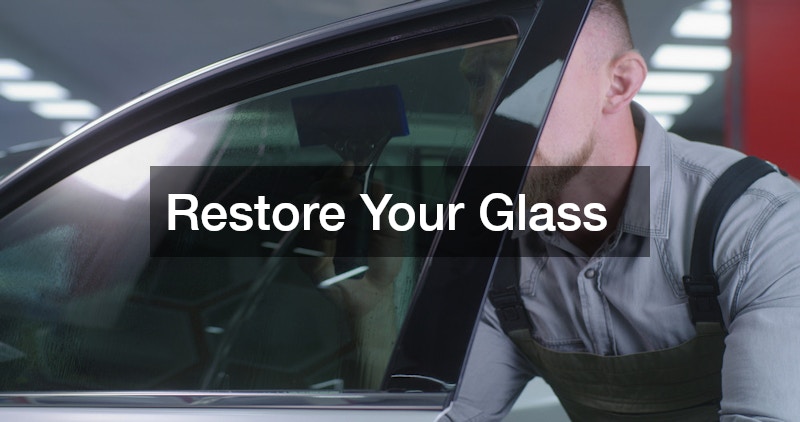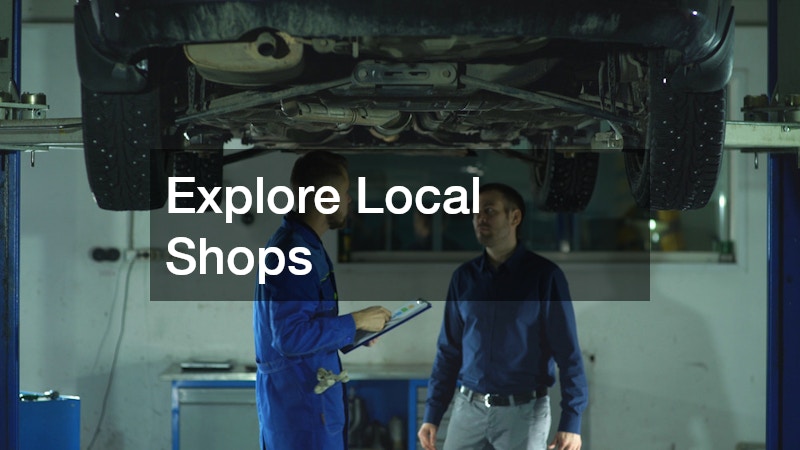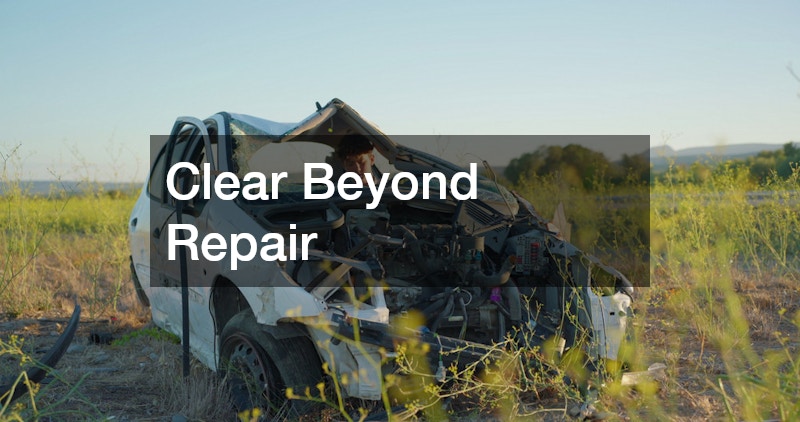When you find yourself dealing with car crash damage, the stress can feel overwhelming. Vehicles are not only modes of transportation but also central to daily routines, so it’s natural to feel anxious about what steps to take next. While it may seem like the list of responsibilities grows longer by the day, there are actually many paths you can pursue to restore, replace, or manage the aftermath of a collision. Drivers with damaged vehicles often feel like no solution quite fits their unique situation. The reality is, however, that several options can help you regain control and make smart choices after an accident.
This article explores ten clear and practical routes you can consider when facing a vehicle that’s been compromised in a crash. Some of these approaches focus on repairing what’s broken, while others examine alternatives that may better suit your budget, lifestyle, or long-term transportation goals. You might choose to invest in fixing your current ride, opt to transition into something else, or even clear away what can’t be salvaged. Regardless of the direction you take, understanding all your choices will allow you to approach the problem with clarity and confidence.
Throughout the following sections, we’ll walk through each of these possibilities in order. From seeking expert help and exploring replacement vehicles to handling paperwork and removals, every option plays a role in mapping the right path forward. Whether your car is lightly dented or heavily damaged, knowing your range of solutions will ease the pressure of decision-making. With these ten approaches, you’ll be better equipped to take the next steps and recover from the challenges that come with car crash damage.
1. Get Expert Help
When a vehicle has been compromised in an accident, one of the first steps many people take is to find someone with the skills to restore it to safe and functional condition. Relying on a trained professional ensures that you are not taking chances with makeshift fixes or uncertain outcomes. This is especially important because even minor car crash damage can mask deeper issues that aren’t immediately visible, such as alignment problems or weakened structural components. Consulting with someone who understands every aspect of a car’s design allows you to feel confident in both the repairs and your ability to drive safely again.
Working directly with a mechanic offers a level of insight that goes beyond what most drivers can determine on their own. These experts have access to tools and diagnostic technology that reveal hidden issues caused by the crash, such as small leaks, faulty wiring, or compromised suspension parts. They can also give you an honest assessment about whether repairs are worth the cost compared to replacement. By receiving a clear and informed recommendation, you can plan your next steps realistically and avoid being blindsided later by recurring issues or additional expenses.
2. Consider Pre-Owned
There are times when repairing an accident-damaged vehicle simply isn’t the most logical or cost-effective solution. In those situations, many people look into alternatives that still allow them to have reliable transportation without the steep expense of buying new. Shopping for a pre-owned option can be an excellent way to move forward when your current car has suffered car crash damage that makes it unsafe or impractical to fix. It provides an affordable middle ground between clinging to a damaged vehicle and overspending on something fresh off the lot.
The market for a used car is expansive, with dealerships and independent sellers offering options at nearly every price point. By carefully researching and asking questions, you can find a vehicle that fits your needs without stretching your budget too far. Many pre-owned vehicles now come with certified programs, meaning they have undergone inspections and carry limited warranties. This gives you peace of mind that your replacement won’t immediately bring on new sets of problems, making it a dependable route for those looking to bounce back after an accident.
3. Restore Your Glass
After an accident, the state of your vehicle’s glass should never be overlooked. Shattered or cracked windows not only compromise safety but also leave your car more vulnerable to weather, theft, and reduced visibility. Addressing these concerns early can prevent further complications and help restore both the comfort and the function of your ride after car crash damage. Enhancing the condition of your glass can also make your vehicle feel refreshed, even if other damage is still being managed.
One option for improving your car’s glass is to consider treatments that enhance durability and aesthetics. Installing auto window tint is a popular choice for many drivers, especially after a collision. Tinted glass reduces glare, protects the interior from harmful UV rays, and provides added privacy. This approach not only fixes a potential safety concern but also upgrades the look and feel of your vehicle, giving you a sense of renewal after the setback of an accident.
4. Solve Lock Issues
A collision can cause unexpected issues with your car’s locking mechanisms, from jammed doors to broken keys. These problems might seem secondary compared to visible dents and scrapes, but they play a critical role in keeping your vehicle secure and functional. Overlooking these details after car crash damage could mean you face daily frustrations or even security risks, especially if your car is parked outdoors.
Turning to an auto locksmith can solve these challenges quickly and effectively. These specialists are trained to handle everything from repairing damaged ignition systems to replacing lost keys. In the aftermath of a crash, they can make sure your locks and entry points are restored to working order. Having reliable access to your vehicle ensures you can continue using it without interruption while larger repairs are being addressed.
5. Explore Local Shops
Navigating the aftermath of an accident can leave you juggling many different problems at once. From bodywork to electronics, not every issue can be handled by a single expert. That’s where local shops come in, offering a range of solutions that address different aspects of car crash damage. By exploring these options, you may discover a wider set of services tailored to your unique circumstances.
Shops that provide comprehensive auto services are especially valuable for drivers managing multiple repair needs. Instead of running back and forth between specialists, you can often find a location that covers areas such as paint, body, detailing, and minor mechanical fixes. This all-in-one approach saves time and helps keep the repair process more organized. In some cases, bundled services can even reduce overall costs, giving you both efficiency and value in one place.
6. Fix Structural Damage
One of the most pressing concerns after an accident is whether your vehicle’s structure is still sound. While dents and scratches are easy to see, the hidden framework that supports the car can also be weakened. If this part of the vehicle isn’t properly repaired, it can create serious safety risks and make your car far less reliable. Addressing these problems early can save you from ongoing complications and give you peace of mind knowing that the car is stable again after car crash damage.
Collision repairs are designed to tackle these exact challenges. Specialized technicians use equipment to measure and realign the vehicle’s frame, ensuring that it meets manufacturer specifications. Without these steps, even a small misalignment can affect handling, braking, and the overall safety of the car. Choosing this option means you’re prioritizing both immediate functionality and long-term security, which is especially important if you plan to continue driving the vehicle regularly.
7. Clear Beyond Repair
Sometimes, the cost of fixing a badly damaged vehicle outweighs the benefits. In these cases, it’s wise to accept that keeping it isn’t practical. Vehicles that are too far gone often become ongoing sources of frustration and expense, and it may be better to part ways. This decision is never easy, but it can allow you to move forward with more confidence after car crash damage.
Turning to demolition companies offers one route to handle cars that simply cannot be salvaged. These businesses specialize in dismantling and recycling vehicles, ensuring that parts and materials are repurposed instead of wasted. It’s an environmentally conscious way to dispose of a vehicle while also clearing space and removing a financial burden. This solution may even put a little money back in your pocket if scrap materials can be resold.
8. Pass Required Tests
After an accident, your car may face more than just physical repairs—it may also need to meet certain legal or safety requirements before returning to the road. These checks are important to ensure that the car is safe for both you and others. When car crash damage affects performance, emissions, or other regulated systems, you can’t ignore the testing that keeps everything compliant.
This is where car emissions testing becomes a crucial step. These assessments check how much pollution your vehicle produces and confirm that it meets state or local standards. If your car fails, you’ll need to address the mechanical issues causing the problem. Passing this test is often necessary not only for driving legally but also for renewing your registration.
9. Remove Old Vehicles
In some cases, an accident leaves you with more than one vehicle to worry about. Perhaps you’ve been holding onto an older car that was already near the end of its life, and now the recent accident has made you reconsider. When car crash damage pushes you to finally clear things out, this can actually be an opportunity to simplify and reduce clutter.
Vehicle removal services are designed to make this process easy. These companies handle the logistics of picking up and hauling away cars that no longer serve a purpose. Many offer quick scheduling and take care of the paperwork required to transfer ownership or scrap the vehicle. This saves you time and spares you the hassle of navigating the process alone.
10. Handle Final Haul
Sometimes, the last stage of dealing with a wrecked vehicle is clearing away what remains. Whether it’s a car that failed inspection, one that isn’t worth fixing, or a leftover shell after parts have been salvaged, you may need a service to handle the cleanup. After car crash damage, this final step ensures that nothing unusable lingers in your driveway or yard.
Junk removals are often the best solution for this stage. These services collect vehicles or scraps that can’t be resold or repaired, ensuring they are disposed of properly. Many junk removal companies offer free pickups or even small cash incentives depending on what’s collected. This makes the process simple and sometimes even rewarding.
When faced with car crash damage, it’s easy to feel like you’re trapped in a cycle of uncertainty. Accidents create a ripple effect, leaving drivers not only with a damaged vehicle but also with a long list of decisions to make. Fortunately, you don’t have to face the aftermath without direction. The ten options outlined above provide practical solutions for dealing with every level of damage, whether you want to repair, replace, recycle, or simply remove what no longer serves you.
Working with professionals who handle repairs and structural fixes ensures your car remains safe and reliable, while exploring alternatives like purchasing pre-owned or enhancing glass protection gives you flexibility in how you move forward. For those with vehicles beyond saving, demolition companies, removal services, and junk clearing offer closure while protecting the environment. Even steps like emissions testing play an important role in keeping you legal, efficient, and confident behind the wheel. Each approach addresses a different stage in the journey of managing accident fallout.
The most important takeaway is that you have choices. Not every accident means the end of your driving independence, nor does it always demand a costly repair. Sometimes it’s about making a smart trade, restoring what you can, or finding the right service to take care of the rest. By understanding these ten options for your vehicle if you have car crash damage, you put yourself in control of the situation. With the right information and the willingness to evaluate your needs, you can navigate the road ahead with confidence and clarity.



